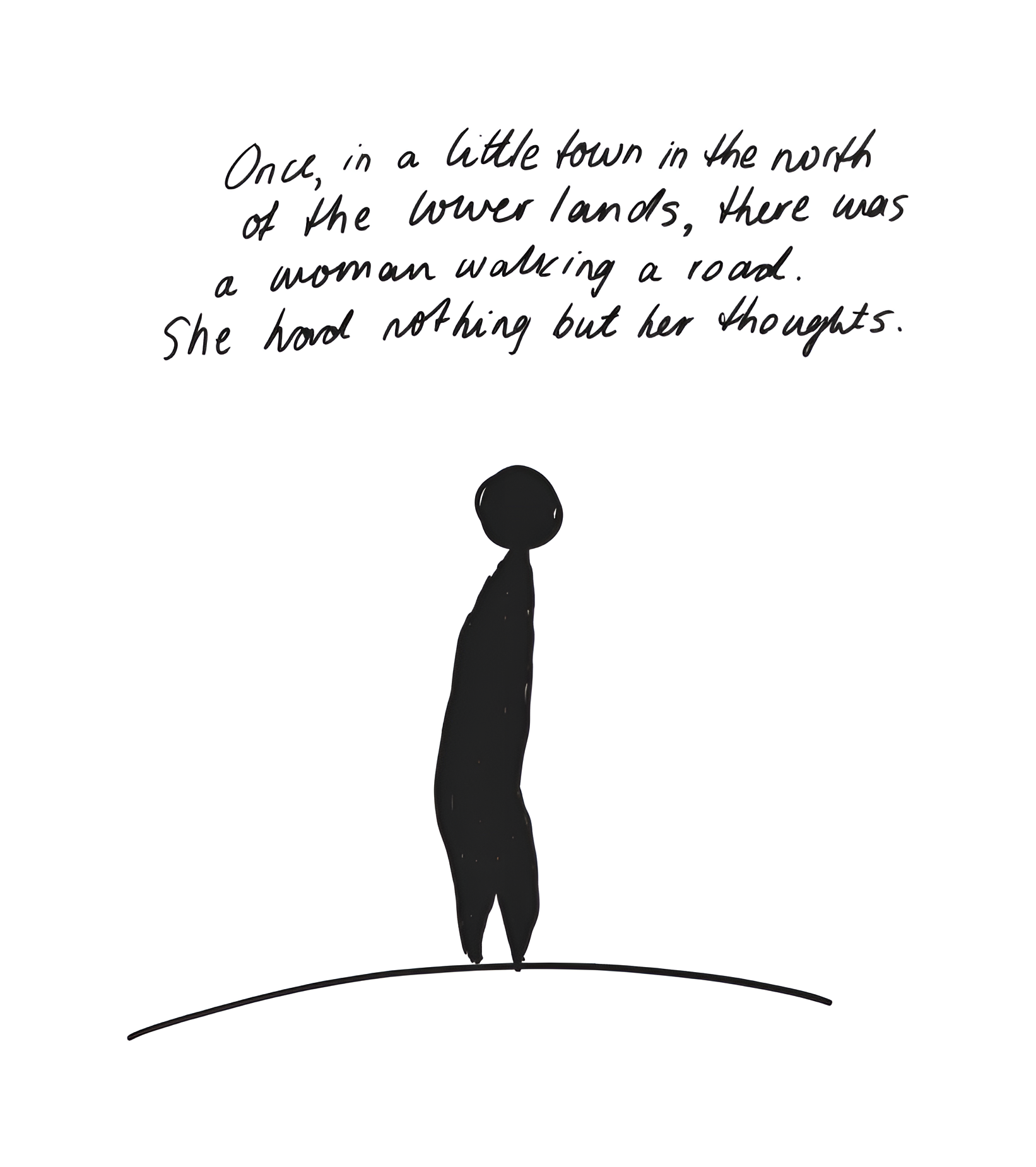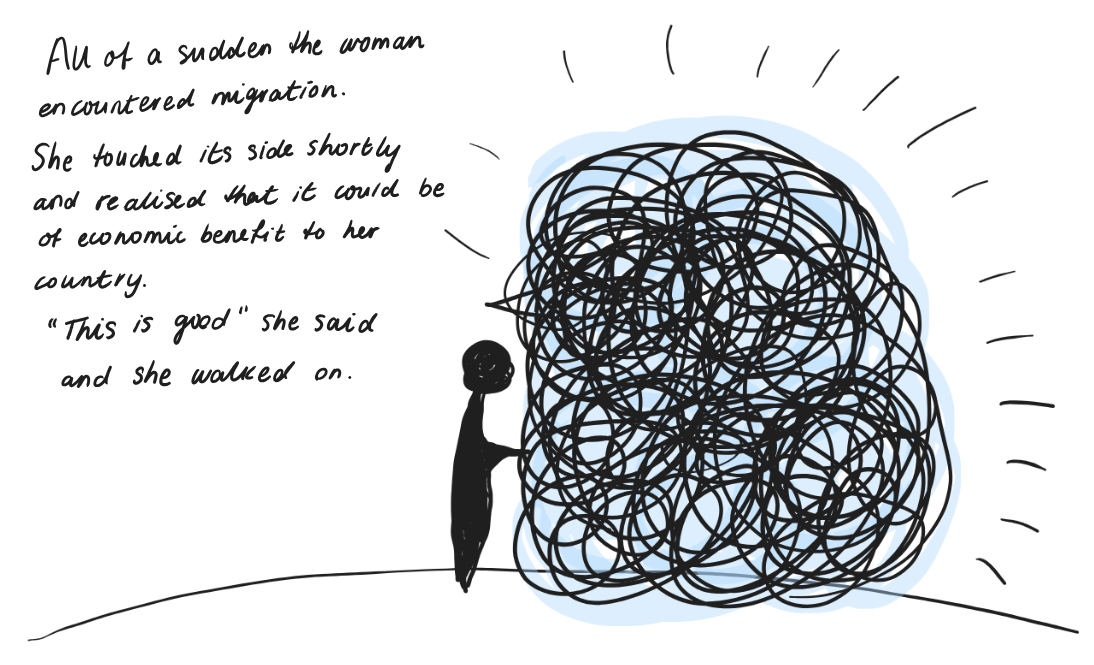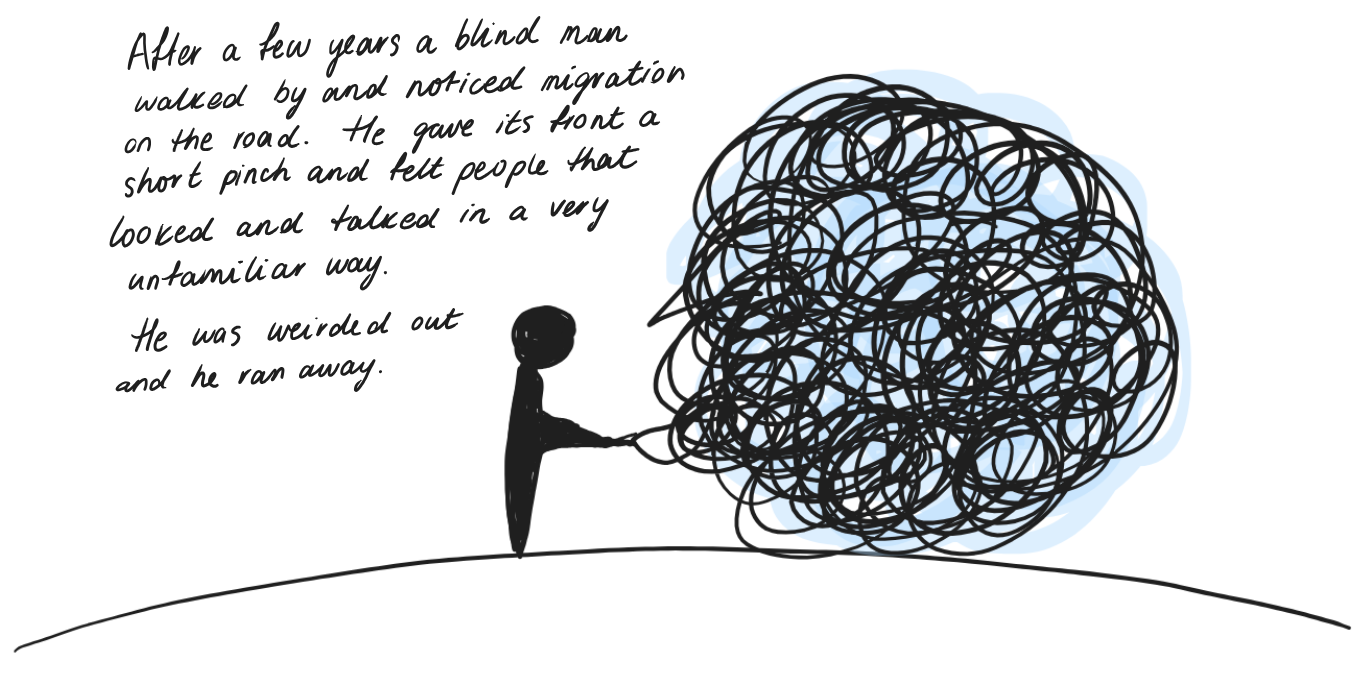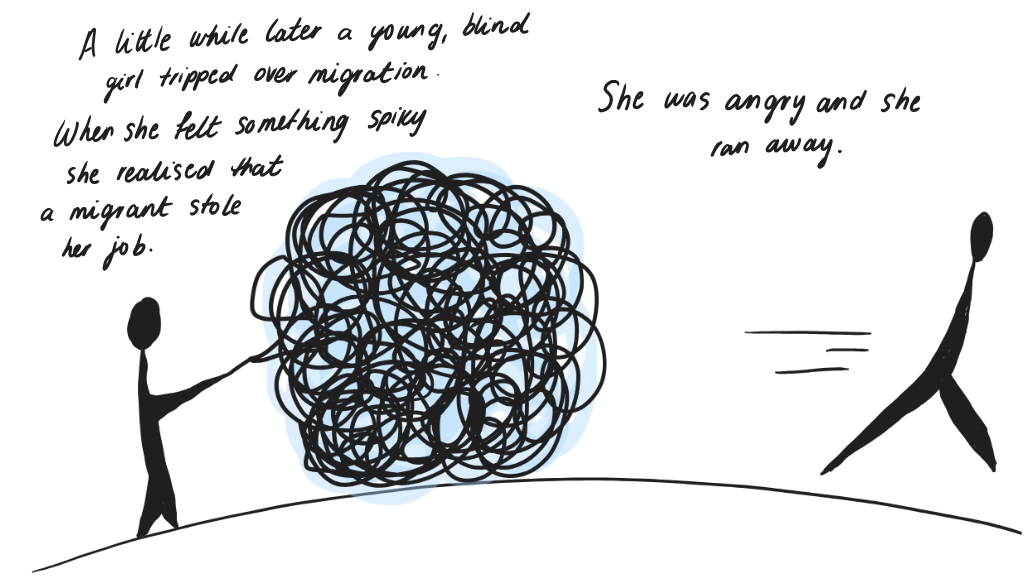18 Useful Fiction
Kirsten Kievit
Kirsten Kievit
Description
Useful fiction as a philosophical tool can be defined in different ways. Below, I will explain 3 different definitions of the tool.
The most general definition of useful fiction is one that Austin uses. He defines a useful fiction as: “any statement, proposition, narrative or piece of information whose adaptive function does not require it to be true.”1 In this definition, a useful fiction can be any distortion of reality that is useful for the real world. Its function is that it adds something to reality because it is something fictive. For example, a fictive story that gives us new ideas or insights about our own life or the world that we live in can be seen as a useful fiction, just because it is a fiction and useful.
According to Fosl and Baggini, useful fiction as philosophical tool is a category of thought experiments. This means that useful fictions can be used in philosophical discussions in order to shed new light onto the discussion. Thought experiments place us in a hypothetical situation that changes the real situation in such a way that it can challenge our views. A machine that allows you to do whatever you want in your life once you step into it2 might challenge the views that you have of what is good in life. Such a thought experiment could change our initial ideas about ethics.
Contrary to other types of thought experiments that can only be used in specific situations (like the experience machine can be used for the meaning of life), useful fictions are stories that can be used as thought experiments in different contexts. They are literally fictions that are useful in many different contexts. The veil of ignorance by John Rawls is an example of useful fiction.3 This fiction tells the story of a veil that, when you wear it, lets you forget the role that you occupy in society. This allows the wearer of the veil to make impartial judgements. It promotes unbiased, pure decisions about social and political matters. A thought experiment like this is relevant in many different social and political contexts. It is a fictive story that becomes useful when applied to the right context.
So, according to this definition, thought experiments are useful fiction when they put us in a hypothetical situation that is useful in different contexts.4
Another definition of useful fiction is given by Cole and Singer. They use the term fictional intelligence, or FICINT. This is a fictional story that can give us foresight in the future.5 FICINT can help us prepare for what could happen to the world in order to prevent problems. So in FICINT, fictions are also used in order to gain new insights about real-life situations.
FICINT can be a novel, short story or even a graphic novel. It can be written by one person or by a group.5 Contrary to the first two definitions of useful fiction, in this definition the form that the fiction takes is actually a written work, like in our general use of the word fiction.
But which of these different definitions of useful fiction will be relevant to my application to migration? Like Fosl and Baggini, I will take useful fiction to be a type of thought experiment that can be useful in different contexts. Useful fictions are made-up stories that can shed new light on real-life situations and thereby change our views of those situations. I will also show how, as Cole and Singer explain, useful fictions can have the form of a written work.
Application
Useful fiction can be an insightful tool to help us better understand why migration is a highly debated topic in our society. My application of useful fiction to the issue of migration will show that everyone views migration with their own perspective and that we are thus not talking about the same thing when talking about migration. I will use an already existing fiction and I will change it in such a way that it will be useful to understand migration. The fiction that I will use is the story of The Blind Men and the Elephant, a poem written by John Godfrey Saxe. It tells the story of six blind men encountering an elephant. All six men touch a different part of the animal and end up with a different perception of what the elephant is like. The poem is as follows:
THE BLIND MEN AND THE ELEPHANT.
A HINDOO FABLE.
I.
It was six men of Indostan
To learning much inclined,
Who went to see the Elephant
(Though all of them were blind),
That each by observation
Might satisfy his mind.
II.
The First approached the Elephant,
And happening to fall
Against his broad and sturdy side,
At once began to bawl:
“God bless me! but the Elephant
Is very like a wall!”
III.
The Second, feeling of the tusk,
Cried, “Ho! what have we here
So very round and smooth and sharp?
To me ’tis mighty clear
This wonder of an Elephant
Is very like a spear!”
IV.
The Third approached the animal,
And happening to take
The squirming trunk within his hands,
Thus boldly up and spake:
“I see,” quoth he, “the Elephant
Is very like a snake!”
V.
The Fourth reached out his eager hand,
And felt about the knee.
“What most this wondrous beast is like
Is mighty plain,” quoth he;
“ ‘T is clear enough the Elephant
Is very like a tree!”
VI.
The Fifth, who chanced to touch the ear,
Said: “E’en the blindest man
Can tell what this resembles most;
Deny the fact who can,
This marvel of an Elephant
Is very like a fan!”
VII.
The Sixth no sooner had begun
About the beast to grope,
Than, seizing on the swinging tail
That fell within his scope,
“I see,” quoth he, “the Elephant
Is very like a rope!”
VIII.
And so these men of Indostan
Disputed loud and long,
Each in his own opinion
Exceeding stiff and strong,
Though each was partly in the right,
And all were in the wrong!
MORAL.
So oft in theologic wars,
The disputants, I ween,
Rail on in utter ignorance
Of what each other mean,
And prate about an Elephant
Not one of them has seen!6
In my application of useful fiction to the issue of migration, I am going to turn this poem into a short story that is supported by illustrations. The story is about six people encountering the object of migration. Migration is presented to them like the elephant was presented to the blind men in the poem. Without revealing too much, let me present to you: The Blind People and Migration.
The Blind People and Migration







Analysis
What can this story tell us? In The Blind Men and the Elephant every man touches a part of the elephant’s body and gets a different idea of what the elephant is like. One touches the knee and thinks the elephant resembles a tree, another one touches its tail and thinks it looks like a rope. In The Blind People and Migration, similarly, every person touches a different part of migration and forms a completely different opinion of it. Because everyone has a different opinion, the issue of migration is such a debateable topic.
Six Different Perspectives
Of course, migration does not exist as a concrete, physical object in real life, so the parts of migration that the people in the story touch are not physical parts of the object. Migration is a conceptual object in the story. It represents everything that migration as a phenomenon entails in our society, with every person touching the conceptual object experiencing a different part of the phenomenon.
The first woman feels a part of migration that reminds her of the economic benefit that migration can have on her country. She is left with a positive idea of migration. The second person that encounters migration is a man that feels a part that makes him realise that migrants can be people from countries with completely different cultures. He does not like migration. The third person is a man that touches that specific part of migration that makes him scared that his home will be replaced by unknown migrants. The fourth person is a woman that realises that migration can be a way to save asylum seekers. She comes to like migration. The fifth person felt a part of migration in his personal life and that part made him dislike migration. The last person touched the part that results in foreign cultures being shared. Migration gave him a plate of delicious food from a foreign culture and he came to like migration because of this pleasant experience.
All these people saw a different aspect of migration by encountering the object. Because they all experienced a different part of it, they all have a different perspective and a different opinon. Migration is viewed in different ways, and like the last page of the story tells us: no one that encountered migration has actually seen it. Just like the people in the story, we are all use our own understanding of what migration is, so we are all talking about something else when we talk about migration. This forms problems when trying to decide what to do about the issue of migration. Should one perspective be preferred over the others? Whose perspective should be preferred? Who is right? Should we allow migration or should we limit it (see Exercise 1 below)?
The Perspective of the Reader
Because migration is not actually a physical object, it is drawn in the illustrations as a vague blob. Every person that encounters migration feels a different part of it and is left with a different opinion of it. The object in the story represents all that migration can entail.
The fact that migration is not illustrated as an object with a concrete form also appeals to the judgement of the reader, because the reader also sees migration in the illustrations as a vague blob. The reader, just like the six people in the story, has their own perspective on migration and sees it in a different way than someone else would. So, when seeing the blob before having read what the people in the story experience, the reader also sees certain things. The reader will, thus, become aware of their own perspective on migration (see Exercise 2 below).
Fair Perspectives
Another important aspect of The Blind People and Migration is that the people that encounter migration are not unreasonable in the opinion that they form of migration. Someone metaphorically hits his nose on it and another trips over it. They all have their own personal reasons for forming a negative or positive opinion of migration, but these are all reasons that we can understand. Seeing that migration could save lives or eating delicious food because of migration seem to be understandable reasons for liking migration. It also seems understandable to be annoyed by someone taking your job or to be scared of things that are unfamiliar. Some people around us might have actually seen the negative effects that migration can have on them or our society. And other people around us might love the idea of migration, because they saw how good the outcomes can be. But it is still important to recognise that everyone is limited in their perception. Everyone’s reality of migration is relative to their own perspective.
Undefined Aspects
Not only migration in the story is an undefined object, the people in the story are also abstract versions of people. They don’t have any specific characteristics, apart from the fact that some of them are gendered (however, not all of them are men, like in The Blind People and the Elephant). This abstraction of the people adds to the idea that some things that we think are concrete and defined are in fact undefined, or limited to our own perspective. Just as in the object of migration, the reader might also imagine the people in the story in a certain way. This reminds the reader that reality is limited and formed by their own perspective.
Conclusion
What can we conclude from this? The Blind People and Migration example shows us that everyone looks at societal issues from a different perspective. There are different ways to look at migration and everyone does look at migration from a different perspective. So, when talking about migration, we are all talking about something else. That is why migration is so highly debated and why it is hard to determine whether we should be for or against migration. One person might have their own reasons for thinking that it is good, while another has different reasons for thinking that it is bad. And no one is right or wrong, because no one can see the whole object. We are all partly blind to the reality of migration.
Philosophical Exercises
- Does it solve (part of) the issue of migration to know that everyone reasons from a different perspective or does it make the issue harder to solve?
- What does the object of migration in the story look like to you? What do you see in the abstract blob that I drew? Try to make a concrete drawing of this.
References
- Austin, Michael. Useful Fictions: Evolution, Anxiety, and the Origins of Literature. Lincoln, Nebraska: University of Nebraska Press, 2011.
- DeNicola, Daniel R. “The Experience Machine.” In A Reader in Moral Philosophy, 112-118. Broadview Press, 2022.
- Rawls, John. Justice as fairness: A restatement. Harvard University Press, 2001.
- Fosl, Peter S. & Baggini, Julian. The Philosopher’s Toolkit: a Compendium of Philosophical Concepts and Methods. Chichester, West Sussex: Wiley Blackwell, 2010.
- Cole, August & Singer, P.W. “Thinking The Unthinkable With Useful Fiction.” Journal of Future Conflict, no. 2 (2020): 1-13.
- Saxe, John Godfrey. “The Parable of the Blind Men and the Elephant.” In Human Ecology Review 6 no. 2 (1999): 134.
